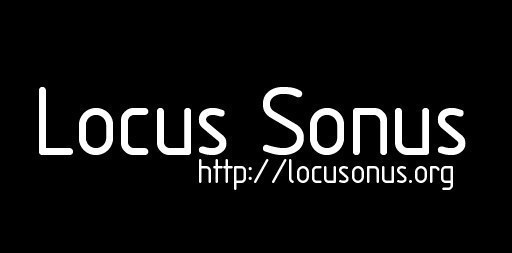locus sonus > audio in art 


locus sonus > R&D > ANR programmesLast changed: 2012/03/15 17:44
|
||
|---|---|---|
Difference between revisions from 2012/03/03 15:01 and 2012/03/03 14:58.{include:subpage recherche}
{html}
<HR NOSIZE COLOR="red">
<SPAN ID=s13 style="border-bottom:1px solid #333; padding:4px;">
• <B>Candidatures ANR </B></SPAN><br><br>
<SPAN ID=s14>2008 et 2012
<BR><BR>
(accès aux pages des programmes ci-dessous)<BR>
</SPAN>
<br><br>
<hr nosize>
<br><br>
<SPAN ID=s13 style="border-bottom:1px solid #333; padding:4px;">
• <B>2012 - ANR</B></SPAN><br><br>
<SPAN ID=s14>Appel Blanc<BR>
<BR>
Jan 2012
<BR></SPAN>
<SPAN ID=s13>
<P>
<B><U>Partenaires</U></B><BR><BR>
<ul>
<li> LESA Laboratoire d'Études en Sciences de l'Art Univ. de Provence Aix-Marseille 1
<li> École supérieure d’Art et de Design de Marseille et de la Méditerranée (ESADMM)
<li> Locus Sonus (ESA Aix en Provence, ENSA Bourges)
<li> LSIS Laboratoire des Sciences de lʹInformation et des Systèmes
</ul>
</P>
<BR><BR>
<P>
<B><U>Résumé de la proposition</U></B><BR><BR>
<DIV style="border:1px solid #333; padding:4px;"><SPAN ID=s30><B>SonArt<br>
SonArt : pour un corpus numérisé et indexé des expérimentations et production artistiques sonores
</B></SPAN></DIV>
<DIV style="border:1px solid #333; padding:4px;"><SPAN ID=s30><B>SonArt<br>
SonArt : for a digital corpus and index artistic experiments and sound productions
</B></SPAN></DIV>
<br><br>
<A HREF="http://locusonus.org/w/index.php?page=R%26D+%3E+SonArt" target="_top">Aller à la page du programme</A>
<BR><BR>
<P>
<B><U>ABSTRACT</U></B><BR><BR>
Le projet de recherche SonArt vise le développement dʹune base documentaire sur les arts
sonores à lʹaide dʹoutils numériques spécifiquement élaborés. Les arts « sonores » ne sont pas
une catégorie définie : ils impliquent sculptures ou installations sonores, poésie sonore, arts
en réseau, musiques expérimentales, création radiophonique, création vidéographique, etc.
Alors que ce domaine est aujourd’hui en pleine expansion, son inventaire et son approche
historique n’en sont qu’à leurs débuts tout autant que sa théorisation, actuellement en pleine
évolution dans les pays anglo‐saxons et germaniques. SonArt propose d’y ajouter une
importante contribution.
<br><br>
<hr nosize>
The aim of the SonArt Research Project is to develop a database on “sound art” with digital tools specifically tailored to its
needs. “Sound art” does not refer to a distinct artistic discipline as it might consist of sculptures or installations with sound,
sound poetry, web art, experimental music, radio art, video art, etc. Although this type of artistic practice is booming,
historical and theoretical research on sound art is still at the embryonic stage. However, sound art theory is now quickly
gaining momentum in Anglo-Saxon and German-speaking countries. SonArt’s ambition is to contribute substantially to this
theoretical debate.
</p>
<BR><BR>
<P>
</P>
</SPAN>
<br><br>
<hr nosize>
<br><br>
<br><br>
<hr nosize>
<br><br>
<br><br>
<hr nosize>
<br><br>
<SPAN ID=s13 style="border-bottom:1px solid #333; padding:4px;">
• <B>2008 - Candidature ANR </B></SPAN><br><br>
<SPAN ID=s14>Appel blanc - (projet non sélectionné)<BR>
mar 2008
<BR></SPAN>
<SPAN ID=s13>
<P>
<B><U>Partenaires</U></B><BR><BR>
<ul>
<li> LAMES Laboratoire Méditerranéen de Sociologie MMSH CNRS UMR 7503, Université de Provence (F)
<li> CRESSON, Ambiances architecturales et urbaines, CNRS UMR 1563, ensa Grenoble (F)
<li> LTCI/TELECOM PARIS TECH (F)
<li> LOCUS SONUS, Écoles Supérieures d'Art, ESA Aix en Provence, ENSA Nice Villa Arson
</ul>
</P>
<BR><BR>
<P>
<B><U>Résumé du Projet</U></B><BR><BR>
<DIV style="border:1px solid #333; padding:4px;"><SPAN ID=s30><B>ARSONAMPUBLIC<br>
Art sonore, ambiances urbaines, prise de place publique
</B></SPAN></DIV>
<br><br>
<A HREF="http://locusonus.org/w/index.php?page=R%26D+%3E+arsonampublic" target="_top">Aller à la page du programme</A>
<BR><BR>
<P>
<B><U>ABSTRACT</U></B><BR><BR>
This project aims to analyze the sonic component of the life of public places. It does so by enrolling in the same experiment sound artists as well as social scientists.<BR>
At its core is “Locustream Promenade”, a sound art installation, to be set up on the “Parvis de la Défense” in Paris. This installation, which uses audio "streams", is devised so as to transport soundscapes via the Web from one place to another and in “real time” -- this, with a predilection for distant urban places whose soundscapes are captured “non stop” by a network of fellow artists who keep their microphones permanently open in their different surroundings.<BR>
Another feature of the installation is that its streams can be delivered in many ways: scattered as precise spots (sound showers), or stretched in large tracks; tuned so that they melt into the local sound environment or the other way around.
These varieties of modus operandi allow for critical observations of the urban audience, in this case made up mostly of passers by, and the way they react to these sounds.
<BR><BR>
For the student of urban ambiances, these controlled sonic variations are likely to help him decipher the delicate interplay between social life and sound component.<BR>
For the student of digital technology and the ways in which lay actors cope with it, this is a case study in the matter of “immersive environments”, though one which is low key in nature.<BR>
For the student of public places what is at stake is to observe the ways a public place, where “dispersed attention” prevails, can make room for focused attention.
<BR><BR>
Addressing the question of art and its public in an ecological fashion, dealing with the technological component of contemporary art, this project falls into two of the different axees sketched out by the text of the “AO”. But, beyond these two aspects, and by the very fact that the research will be jointly run by artists and scientists, it too addresses the question of the relationships in between artistic and scientific endeavour: not simply from the top down, and in a comparative approach; but from within the project itself, and therefore with a reflexive twist.
</p>
<BR><BR>
</p>
</SPAN>
<BR><BR>
<BR><BR>
<!-- LOGOS -->
<DIV style="border-top:1px solid #333; border-right:1px solid #333; padding:4px; background-color:#fff;">
<IMG SRC="http://locusonus.org/documentation/img/logos/ANR.jpg" height="80">
<IMG SRC="http://locusonus.org/documentation/img/logos/LAMES.gif" height="80">
<IMG SRC="http://locusonus.org/documentation/img/logos/logo_locusonus.jpg" height="80">
</DIV>
<BR>
{/html}
|
||
|
Lab 2013/2014: Elena Biserna, Stéphane Cousot, Laurent Di Biase, Grégoire Lauvin, Fabrice Métais, Marie Müller, (Julien Clauss, Alejandro Duque), Jérôme Joy, Anne Roquigny, Peter Sinclair. 2008/2014 — Powered by LionWiki 2.2.2 — Thanks to Adam Zivner © images Locus Sonus webmaster & webdesign : Jérôme Joy contact: info (at) locusonus.org 2004-2014 Locus Sonus |
||
Article:
Admin functions:
Other:
Search:
Language:
Info:
Powered by LionWiki 2.2.2
Tested on FireFox2, FireFox3, Safari2, Safari3